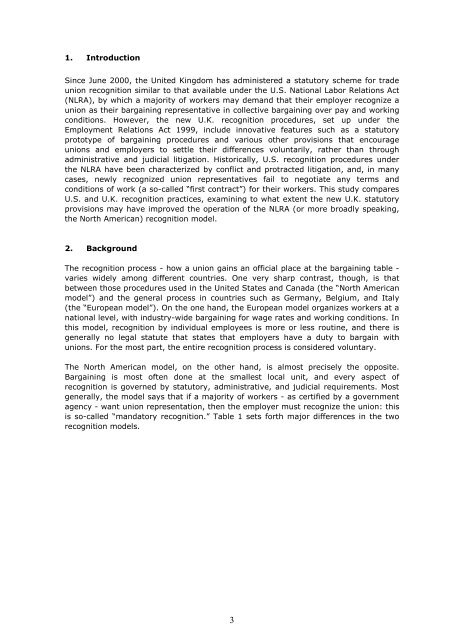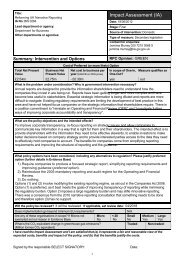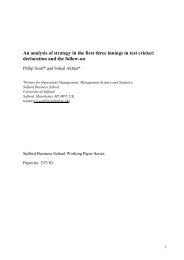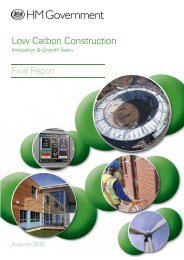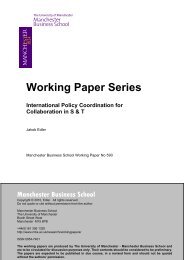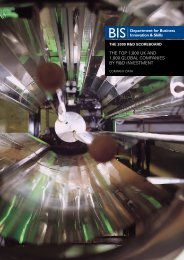Research Paper - Management and Business Studies Portal
Research Paper - Management and Business Studies Portal
Research Paper - Management and Business Studies Portal
You also want an ePaper? Increase the reach of your titles
YUMPU automatically turns print PDFs into web optimized ePapers that Google loves.
1. IntroductionSince June 2000, the United Kingdom has administered a statutory scheme for tradeunion recognition similar to that available under the U.S. National Labor Relations Act(NLRA), by which a majority of workers may dem<strong>and</strong> that their employer recognize aunion as their bargaining representative in collective bargaining over pay <strong>and</strong> workingconditions. However, the new U.K. recognition procedures, set up under theEmployment Relations Act 1999, include innovative features such as a statutoryprototype of bargaining procedures <strong>and</strong> various other provisions that encourageunions <strong>and</strong> employers to settle their differences voluntarily, rather than throughadministrative <strong>and</strong> judicial litigation. Historically, U.S. recognition procedures underthe NLRA have been characterized by conflict <strong>and</strong> protracted litigation, <strong>and</strong>, in manycases, newly recognized union representatives fail to negotiate any terms <strong>and</strong>conditions of work (a so-called “first contract”) for their workers. This study comparesU.S. <strong>and</strong> U.K. recognition practices, examining to what extent the new U.K. statutoryprovisions may have improved the operation of the NLRA (or more broadly speaking,the North American) recognition model.2. BackgroundThe recognition process - how a union gains an official place at the bargaining table -varies widely among different countries. One very sharp contrast, though, is thatbetween those procedures used in the United States <strong>and</strong> Canada (the “North Americanmodel”) <strong>and</strong> the general process in countries such as Germany, Belgium, <strong>and</strong> Italy(the “European model”). On the one h<strong>and</strong>, the European model organizes workers at anational level, with industry-wide bargaining for wage rates <strong>and</strong> working conditions. Inthis model, recognition by individual employees is more or less routine, <strong>and</strong> there isgenerally no legal statute that states that employers have a duty to bargain withunions. For the most part, the entire recognition process is considered voluntary.The North American model, on the other h<strong>and</strong>, is almost precisely the opposite.Bargaining is most often done at the smallest local unit, <strong>and</strong> every aspect ofrecognition is governed by statutory, administrative, <strong>and</strong> judicial requirements. Mostgenerally, the model says that if a majority of workers - as certified by a governmentagency - want union representation, then the employer must recognize the union: thisis so-called “m<strong>and</strong>atory recognition.” Table 1 sets forth major differences in the tworecognition models.3


